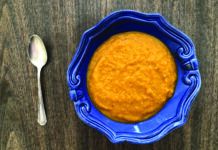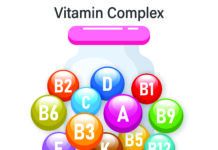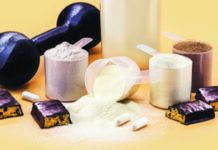Do you want to improve the healthfulness of your diet? Choose naturally fiber-rich foods in place of low-fiber, ultraprocessed alternatives.
Fiber Facts. Dietary fiber is a carbohydrate with a structure that can’t be broken down and absorbed when it travels down the human digestive system. Diets high in fiber have been associated with a wide range of health effects, including lower risk for cardiovascular disease.
Fiber is found naturally in plant foods, including whole grains, fruits, vegetables, beans, lentils, nuts, and seeds. Since the vast majority of U.S. adults don’t consume the recommended number of servings of these foods, it makes sense that surveys show only around 10 percent of women and three percent of men reach the ideal goal of 25 to 30 grams of dietary fiber a day.
Health Effects. Dietary fiber may be best known for its role in helping to prevent constipation, but high-fiber dietary patterns are also associated with a lower risk of cardiovascular disease, type 2 diabetes, and some cancers. Such diets are also rich in nutrients, promote healthy gut microbiota, and may help achieve and maintain a healthy body weight. Results from an analysis of 64 studies with a total of more than 3 million participants supported prior findings that dietary fiber intake is associated with better health. People who reported higher consumption of dietary fiber (which comes from plant-based foods) were significantly less likely to die from cardiovascular disease, cancer, or other causes during the study period.
➧ Pick Plants. Vegetables, fruits, whole grains, beans, lentils, nuts, and seeds are all naturally rich in dietary fiber. Added fibers in processed foods may not be a good choice due to the other components found in those foods.
➧ Don’t Add, Swap. Use fiber-rich foods to replace more processed choices (such as foods made with refined flour and sweeteners).
➧ Go Slow. Increasing your fiber intake too quickly can upset your digestive tract. Start slowly and gradually increase your fiber intake.
Different types of fiber have different health effects. There are several ways of classifying fiber, but the most common division is soluble and insoluble. Soluble fiber forms a gel with water; insoluble does not. Naturally fiber-rich foods contain a mixture of fibers in varying amounts.
Foods higher in insoluble fiber include whole grains, nuts, seeds, many vegetables, and fruits with edible skins, like apples. Insoluble fiber is best known for helping to prevent constipation by providing bulk to stool, which stimulates the movement of food through the digestive tract.
Soluble fiber helps us feel full longer and may help lower blood sugar (glucose) and cholesterol levels. Nonfermentable soluble fiber, like that found in the psyllium products like Metamucil, provides bulk and softens stool, making it easier to pass. Fermentable soluble fibers—found in oats, seeds, nuts, beans, lentils, and some fruits, including apples and berries—are broken down by microbes in the gut. This creates gas, but also some vitamins, hormones, and other metabolites that are absorbed into your blood. These metabolites are one of the main ways in which our gut microbiota influences our overall health.
There is no need to track which type of fiber you’re consuming. The important thing is to consume enough naturally fiber-rich foods.
Fiber Fail. Some processing can reduce or eliminate naturally present fiber. Fruit juice, for example, has virtually no fiber compared to the whole fruit, and most of the fiber is removed from whole grains when making refined (white) flour.
Researchers who analyzed health information from over 110,000 people concluded that replacing products made with refined grains and sweeteners with whole grains and whole fruit may be protective against cardiovascular disease, including heart attack and stroke.
Many manufacturers are adding fiber to processed foods. While some research shows added fiber can have beneficial effects, the purported health benefits vary considerably, depending on the type of fiber (and the type of food it is added to), and it is unclear if added fiber is as good as fiber in the natural form.
Some foods with added fiber are not good choices. Watch out for added fibers in products like cookies, ice cream, or salty snacks. Foods with added fiber are not equivalent to naturally fiber-rich foods like fruit and nuts, not only in fiber type and amount, but also with respect to other nutrients. No amount of added fiber can make up for a product low in essential nutrients and high in added salt and sugars.
What to Do. When increasing your fiber intake, do so slowly so your digestive system has time to adjust. Choosing a variety of naturally high-fiber foods like vege-tables, fruits, beans, lentils, whole grains, nuts, and seeds in place of more processed options will increase the dietary fiber you consume and also automatically improve the nutritional quality of your diet, bolster your beneficial gut micro-biota, support your cardiometabolic health, and, yes, help keep you regular!























